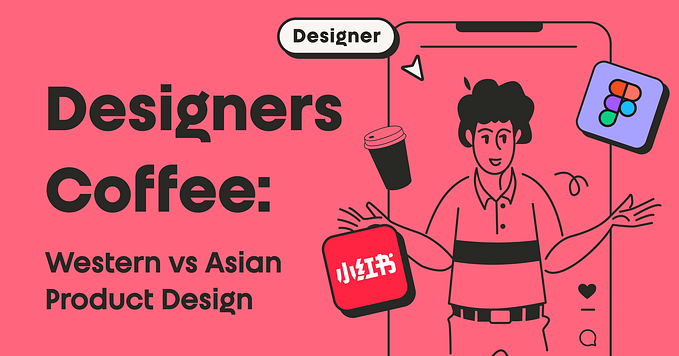Why UX Design Strategy is Crucial for Business Success
Written by Mary Moore

If you’re new to UX design and haven’t considered strategy yet, now is the time to start. You’re probably thinking, “I’ll figure it out as I go along,” or, “Do I really need a strategy?” Here’s the thing — you do.
There may be times when you question yourself, or someone on your team wonders, “Why are we doing it this way?” (Yes, that happens more frequently than you’d expect.) However, having a good approach provides you with confidence and solutions. Plus, it puts everyone on the same page, which is important when deadlines approach.
If you are still reading, you are probably inquisitive. Perhaps you’ve reached a block with your ideas, or you simply want to improve your talents. In any case, hang around because we’ll go over why UX design strategy is crucial, how to create one, and what the problems are — for you, your team, and, most importantly, your customers.
What Exactly is UX Strategy?
At its core, UX strategy serves as your guide for crafting experiences that genuinely resonate with users and encourage them to engage. It’s not about some abstract notion of “user joy” but rather concrete methods to address their challenges and simplify their lives.
However, it’s crucial not to lose sight of business objectives. The key skill here is learning how to balance user needs with company goals without compromising either side.
Rather than concentrating solely on aesthetics or surface-level impressions, UX design strategy emphasizes understanding the reasons behind your design choices and the outcomes you aim to achieve.
Foundational Principles
- People-focused Approach: Develop your strategy by prioritizing the individuals who will use your product. Identify their pain points and propose design solutions tailored to resolving those issues.
- Clearly Defined Targets: Establish what success means for your product — whether it’s acquiring more users, enhancing satisfaction, or boosting engagement.
- Synchronization with Corporate Aims: Your designs should not only serve users but also align with organizational priorities, such as driving revenue growth.
- Data-Informed Choices: Rely on user studies, market evaluations, and feedback to inform your strategy. This ensures your designs are grounded in reality rather than speculative ideas.
- Continuous Improvement Cycle: Expect to experiment, gather insights, and refine your approach. Just as products evolve over time, so too should your strategy, adapting based on new knowledge and user interactions.
Contrasting UX Strategy with General UX Design
While general UX design centers on the tangible aspects of a product — its visual appeal, functionality, and overall feel — it involves brainstorming details like color schemes, constructing wireframes, and building prototypes. It focuses on execution: how to bring these elements to life.
On the other hand, UX strategy delves into the rationale behind decisions. Instead of asking how , it explores why . Why include certain features? Why incorporate specific sections? It provides the overarching vision that determines which designs are worth pursuing. Essentially, it charts the course and ensures consistency throughout the journey.

The Importance of UX in Contemporary Business
In today’s landscape, UX extends far beyond mere aesthetics or button placements. The overall experience users have with your product plays a pivotal role in determining its success. Moreover, it significantly impacts several key areas:
Building Customer Loyalty: When users find joy in interacting with your app or website, they form an emotional bond with your brand. Think back to the last time you struggled with an unwieldy app, spending ages just to locate a simple feature like “Add to Favorites.” Chances are, you uninstalled it shortly after. Conversely, positive experiences encourage repeat visits and foster lasting relationships.
Boosting Revenue: Minor irritations, such as inefficiencies in the checkout process, can hinder conversions. By dedicating resources to refine these moments, businesses can enhance conversion rates, drive up sales, and minimize customer turnover.
Enhancing Brand Image: There’s a direct link between user satisfaction and brand perception. When customers appreciate the usability, design, and functionality of your product, they perceive your brand as robust and reliable. Positive associations essentially become synonymous with your brand identity.
Standing Out in the Market: For smaller enterprises or startups, a well-crafted UX strategy can serve as a competitive edge. Unlike other aspects of business, quality UX is difficult for competitors to replicate, making it a unique selling point that propels growth.
Driving Data-Driven Decisions: Relying solely on assumptions when developing products is risky and often ineffective. Instead, leveraging insights into user behavior, challenges, and preferences enables informed decision-making. These insights act as building blocks, guiding the creation of features and updates that truly resonate with users.
Streamlining Internal Operations: The principles of UX aren’t limited to external-facing products; they can also optimize internal workflows. Applying UX thinking to team processes can lead to faster, more efficient collaboration among colleagues.
Ultimately, UX transcends being a design element — it’s a strategic asset that shapes how businesses interact with their audience, improve performance, and thrive in competitive markets.

The Consequences of Overlooking UX Strategy
Choosing to bypass a well-thought-out user experience strategy might seem like the simpler path, but it comes with significant drawbacks. Products risk failing to satisfy user needs, deviating from business goals, or underperforming against competitors in saturated markets.
Subpar User Experience: Without strategic planning, teams may focus on irrelevant features, misinterpret user preferences, and ultimately deliver a product that falls short of expectations. This leads to frustrated users who leave poor reviews or abandon the product altogether.
Mismatched Business Objectives: When company aims and design priorities don’t align, resources are squandered, and valuable opportunities are missed. Inefficiencies arise when efforts are scattered rather than unified, leaving businesses short on funds, talent, or both when they need them most.
Excessive Development Costs: Realizing midway through development that time and energy have been invested in unnecessary features results in wasted resources. Correcting these mistakes requires additional spending, delays, and diminished returns on investment as budgets spiral out of control.
Competitive Disadvantage: Against rivals prioritizing UX design strategies, products lacking this focus appear uninspired or outdated. Users naturally gravitate toward intuitive, user-friendly options. Would you prefer navigating a clunky app riddled with confusion or one where finding features feels effortless? Most would choose the latter.
Increased Churn Rates: Difficult-to-use products lead to higher abandonment rates, forcing companies to spend more on acquiring new users to replace those lost — a costly cycle that erodes profitability.
Challenges in Scaling: Without a solid foundation rooted in a clear plan, scaling becomes arduous. Unexpected obstacles emerge, making it harder to introduce new features or improve existing ones. Current users may also react negatively to poorly implemented changes, further complicating growth.
To illustrate these risks, consider a real-world example from Shakuro’s portfolio: the creation of Navi Africa, an African travel concierge app. Initially, the challenge lay in reshaping perceptions — many associate Africa with stereotypes perpetuated by media narratives around poverty, conflict, and disease.
Shakuro’s task was to craft a UI/UX design and branding system that dismantled these misconceptions while fostering trust. By gathering insights and leveraging data-driven feedback, the team meticulously replaced outdated assumptions with authentic, positive representations. As a result, Navi Africa transformed into a respected ambassador within the travel industry, proving how a robust UX strategy can turn challenges into triumphs.
How to Develop a Successful UX Design Strategy
Step 1: Perform In-Depth Research
As mentioned earlier, understanding your users is the foundation of any effective UX strategy. Without this knowledge, there’s a significant risk of creating something that doesn’t align with their needs or expectations. Use tools like surveys, interviews, and usability tests to gather insights directly from real users. Learn about their challenges, preferences, and pain points. Alternatively, during the early stages, you can rely on user personas — a more internalized method — to guide your planning process.
Step 2: Establish Clear Goals
Collaborate with stakeholders such as managers, executives, or product owners to identify their key priorities. These might include boosting sales, expanding into new markets, or improving customer retention. Next, integrate these business goals with user needs to create objectives that are both measurable and actionable — for example, increasing app downloads by 20% within six months. Once defined, outline how your UX strategy will contribute to achieving these targets.
Step 3: Develop a Strategic Roadmap
To optimize efficiency and resource allocation, map out the entire user journey from start to finish. Visualize each step of their interaction with your product, pinpointing areas where they encounter difficulties. Think of this as a navigational chart for your application; removing bottlenecks ensures smoother experiences. For instance, in an e-commerce app, the typical flow includes searching for products, adding items to the cart, and completing the checkout process. If users frequently abandon their carts, it may indicate issues within the checkout phase that need addressing.
Step 4: Focus on Essential Features
After evaluating your roadmap, prioritize the features most critical to enhancing the user experience. While some elements may also benefit the business, ensure feasibility remains a priority — some ideas might be too complex to implement initially and could be deferred for future updates. The Minimum Viable Product (MVP) approach exemplifies this mindset: release a streamlined version with core functionalities first, then expand incrementally. This prevents overextending resources while still allowing for rapid market entry.
Step 5: Build and Validate Prototypes
With your plan in place, begin transforming your ideas into tangible prototypes. Start with low-fidelity versions, whether sketched on paper or created digitally using tools like Figma. Even at this stage, usability testing can provide valuable feedback. Watching users interact with your prototype helps uncover potential flaws or areas for improvement, enabling swift iterations before moving forward.
Step 6: Continuously Refine and Adapt
UX design is an ongoing process rather than a one-time achievement. User preferences and market conditions evolve over time, necessitating regular updates to maintain relevance. Embrace this dynamic nature by staying informed about emerging trends, assessing their applicability, and incorporating tested improvements. Failure to adapt means even the best designs can grow outdated. By continuously refining your strategy, you ensure long-term success and alignment with changing demands.

Summing up
UX Design Strategy is essential because it plays a pivotal role in creating successful products that align with both user needs and business goals. By focusing on delivering meaningful experiences, businesses can foster user satisfaction, which directly impacts retention and loyalty. When users find value and ease in interacting with a product, they are more likely to return and recommend it, reducing the chances of them abandoning it for alternatives.
From a practical standpoint, having a clear UX strategy also improves cost efficiency. Without one, teams risk investing in unnecessary features or realizing too late that core aspects of the product need reworking. A strategic approach minimizes these risks and ensures that development stays on track, saving both time and resources. Additionally, it lays the groundwork for scalability, allowing products to grow seamlessly without running into unexpected bottlenecks when introducing new features or expanding functionality.
In conclusion, UX Design Strategy is not just about designing interfaces but about crafting experiences that drive success. It ensures that products remain relevant, efficient, and adaptable while meeting both user expectations and business requirements. By prioritizing UX, businesses can achieve long-term growth and stay ahead in an ever-evolving market.
Originally published at https://shakuro.com









